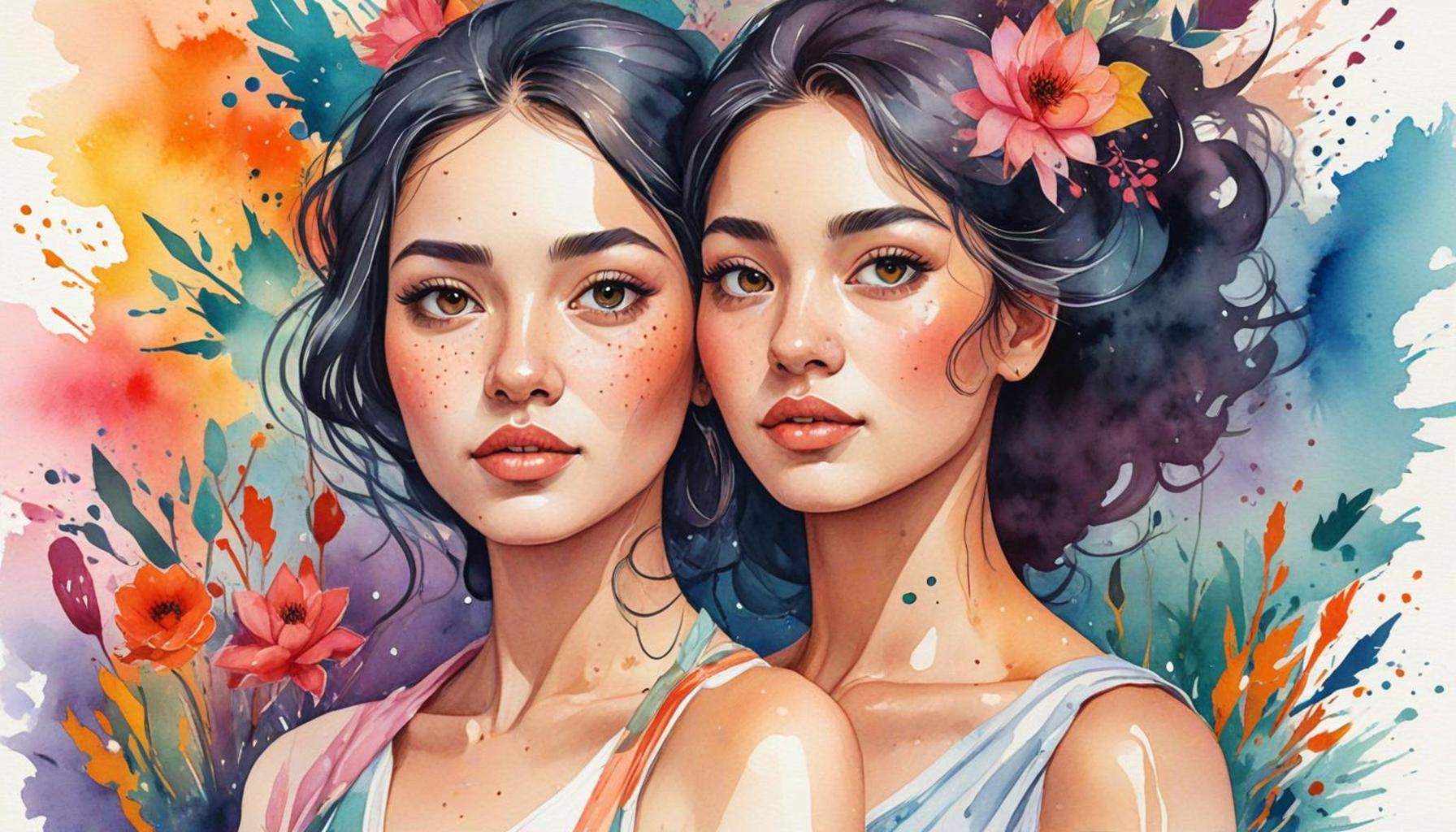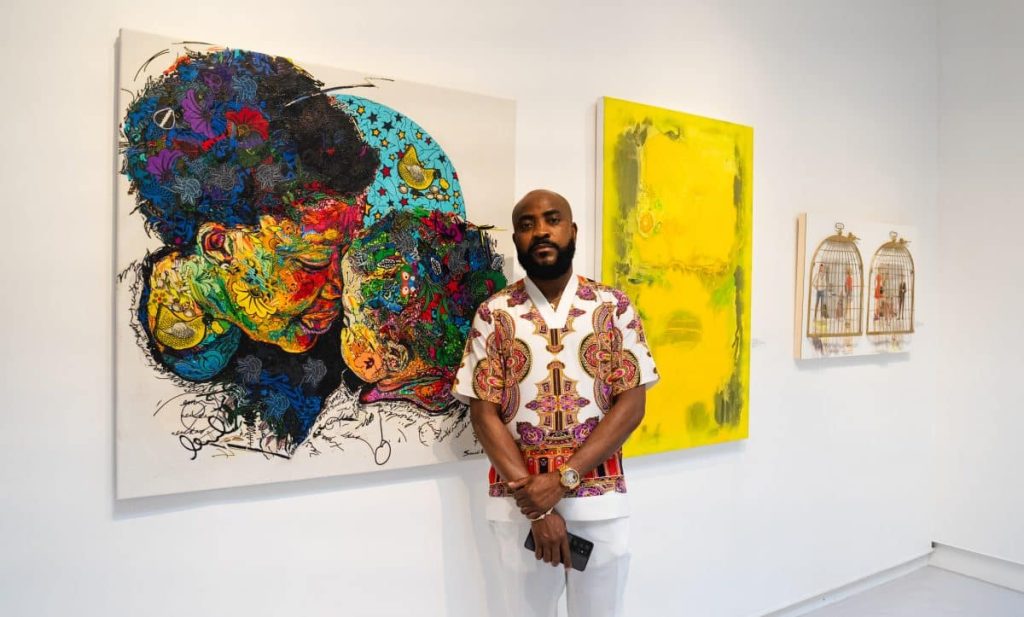Art as a Reflection of Cultural Identity: Personal and Collective Expressions

The Role of Art in Shaping Cultural Identity
Art transcends mere aesthetics; it serves as a powerful medium for expressing cultural identity. Through various forms—whether visual arts, music, dance, or literature—individuals and communities communicate their unique experiences and values. This relationship becomes particularly evident in the United States, a country known for its rich diversity and the blending of multiple cultural influences.
Artists in the U.S. draw inspiration from a multitude of sources, reflecting their backgrounds and environments. These influences can be categorized in several key ways:
- Personal Backgrounds: Each artist’s individual experiences, including their upbringing, education, and personal hardships, shape the narratives they express through their art. An example is the work of Kerry James Marshall, an African American painter whose pieces often reflect themes of Black identity and the cultural history of African Americans, drawing on his own life and experiences.
- Cultural Heritage: Many artists celebrate and preserve their cultural traditions through artistic expressions. In music, for instance, genres like jazz and folk have roots in African American and immigrant histories, each contributing unique sounds and stories to the American soundscape.
- Social Context: Art frequently serves as a reflection of contemporary issues and societal challenges. Artists often respond to events like the Black Lives Matter movement or the women’s rights movement through visual art, performances, and written work, providing commentary that resonates with audiences.
Furthermore, art often serves dual purposes. It is both a personal outlet and a collective expression of community perspectives. This duality fosters:
- Shared Narratives: Communities come together to tell their stories through murals, spoken word poetry, and community theater, enabling group cohesion and mutual understanding.
- Cultural Preservation: Through various artistic practices, traditions are maintained and safeguarded, allowing future generations to connect with their heritage. Native American art, for example, often involves traditional techniques and designs that echo historical significance.
- Cross-Cultural Dialogue: Artistic expressions invite discussions and interactions between diverse cultural groups, facilitating empathy and broader understanding among audiences. Events like the National Performance Network’s annual convening encourage collaboration across cultural boundaries.
As we delve deeper into this fascinating interplay, we uncover how artistic expressions reveal the intricate relationship between personal identity and collective culture. The art we create and consume not only reflects who we are as individuals but also serves as a window into the rich tapestry of our cultural landscape. As we appreciate these forms of expression, we invite you to consider how your own cultural identity is influenced by the art around you, and how you might contribute to this dynamic dialogue through your artistic endeavors.
DIVE DEEPER: Click here to explore the world of sustainable crafting

Exploring Personal Narratives Through Art
Art possesses the unique capacity to distill complex personal narratives into vivid expressions that resonate across time and space. For artists, their work often morphs into a bridge between the personal and the collective, allowing their inner worlds to reflect broader societal themes and struggles. A closer examination of individual artists reveals how their diverse experiences lay the groundwork for creating pieces that resonate with wider cultural identities.
In exploring the concept of personal identity within the realm of art, one can turn to the profound impact of storytelling. Artists like Frida Kahlo, who adapted her personal trauma and heritage into her iconic self-portraits, showcase how art serves as both a therapeutic outlet and a means of connection. Kahlo’s experiences of pain, identity, and femininity reflect the intricate layers of Mexican culture, creating a dialogue that extends far beyond her individual experiences.
The themes present in personal narratives often intertwine with collective experiences of race, gender, and socioeconomic status. Many artists use their platforms to examine issues faced by their communities. Jean-Michel Basquiat, for example, merged his own identity as a Black artist with themes of cultural commentary, social inequality, and historical memory, resulting in vibrant works that address systemic issues while also communicating personal truths. This intersection of personal commitment with broader societal reflections speaks to the universal nature of artistic expression.
Art as a Collective Voice
While personal experiences provide a foundation for artistic expressions, the role of art in representing collective identity cannot be overlooked. Artists often collaborate with their communities to produce works that embody shared values and histories. Murals, public installations, and community-driven projects act as canvases for collective storytelling, often rooted in the specific cultural contexts of the artist’s background.
The phenomenon of community art illustrates how collaborative projects assemble various voices to reflect a unified cultural identity. Many neighborhoods across the United States have engaged in mural projects that capture local history, heritage, and shared aspirations. For instance, the city of Philadelphia has embraced mural art as a vital expression of its diverse communities. Programs like the Mural Arts Philadelphia involve local artists and residents alike, resulting in artworks that reflect the collective narrative of the city’s inhabitants.
This collective power of expression fosters not only a sense of identity among community members but also promotes dialogue with outsiders. Through open-air galleries and public art displays, communities are able to engage with diverse audiences, facilitating an exchange that enriches the cultural experience for both artists and viewers.
These facets of art—individual expression and community-led narratives—speak to the deeply interconnected role of art in shaping cultural identity. As we continue to explore these concepts, it is essential to consider the ways in which both personal stories and collective expressions contribute to a richer understanding of who we are as individuals and communities.
| Advantages | Key Features |
|---|---|
| Cultural Preservation | Art serves as a medium to preserve traditions, languages, and stories, passing them from generation to generation. |
| Identity Formation | Art reflects personal and collective identities, allowing individuals and communities to express their unique experiences. |
Exploring art’s role in cultural identity unveils a deeper understanding of its significance within community dynamics. Artworks, whether they are paintings, music, or dance, act as powerful vehicles for identity formation and expression. In many societies, artists reflect their cultural heritage, showcasing beliefs, values, and narratives pivotal to their communities.Moreover, these expressive forms strengthen social cohesion and a sense of belonging. As communities engage with art, they create connections that could enhance understanding among diverse groups. The intersection of personal experiences with collective identities unfolds myriad stories that not only enrich local culture but also contribute to a more inclusive narrative that is crucial in today’s globalized world.Art as a reflection of cultural identity offers endless pathways for exploration; it invites the audience to delve into how creativity intertwines with ethnicity, history, and shared human experiences, prompting further dialogue and inquiry into the subject. This intricate relationship emphasizes the vital role of art in not only shaping individual identities but also in forging community ties that resonate across generations.
DISCOVER MORE: Click here to enhance your sensory experience
The Role of Art in Cultural Preservation
In addition to acting as a medium for personal and collective expression, art serves a critical function in the preservation of culture. Throughout history, artistic practices have played a vital role in safeguarding the narratives, languages, and traditions of different communities. This preservation is especially pertinent for marginalized groups, whose stories often risk being erased or overlooked in mainstream discourse.
One prominent example can be seen within the Native American community, where traditional art forms like weaving, pottery, and beadwork carry deep cultural significance. These crafts serve not only as a link to ancestral practices but also as a form of resistance against assimilation. By maintaining these art forms, Indigenous artists assert their cultural identity in the face of historical oppression and contemporary challenges.
Furthermore, events such as cultural festivals and art exhibitions often serve as platforms for showcasing traditional art and engaging the public. These gatherings foster appreciation and educate attendees about the cultural heritage they represent. The Smithsonian’s National Museum of the American Indian in Washington, D.C., for example, hosts exhibitions that celebrate Indigenous creativity and address historical narratives, serving both as a museum space and a community center for cultural exchange.
Art as a Catalyst for Social Change
Art is also a powerful vehicle for social change, often sparking dialogue about pressing societal issues while illuminating cultural identities. Artists engaged in activism utilize their work to challenge stereotypes, confront injustices, and advocate for marginalized communities. This aspect of art creates a dynamic interaction between personal stories and the political landscape, making it an essential component of cultural identity.
The art collective Guerrilla Girls exemplifies this intersection of art and activism, using provocative imagery and statistics to draw attention to the underrepresentation of women and people of color in the art world. Their impactful campaigns illustrate how art can serve as a call to action, inspiring others to recognize the importance of equity in cultural spaces.
Moreover, contemporary street art has increasingly emerged as a form of cultural expression that can highlight social disparities while reflecting community identity. The work of artists like Shepard Fairey has transformed walls into canvases of political discourse, reaching a broader audience outside traditional galleries. In cities across the United States, murals and graffiti art have become crucial elements in stimulating discussions about race, identity, and belonging. These public artworks encapsulate not only personal aspirations but also collective sentiments, pushing communities to engage actively with their cultural narratives.
The fusion of personal and collective themes in art not only shapes individual identity but also strengthens community ties, serving as a reminder of the impact of shared values and experiences. Investigating the potent interplay between art and cultural identity leads to valuable insights about how artistic expression can illuminate the complexities of both personal and societal narratives.
DISCOVER MORE: Click here to explore creative herb garden ideas
Bringing Cultural Identities to Life Through Art
In conclusion, the exploration of art as a reflection of cultural identity reveals its multifaceted role as both a personal and a collective expression. The nuances of individual experiences intricately weave into the broader tapestry of community narratives, fostering connections that transcend geographical and temporal boundaries. Through artistic forms, marginalized voices find a platform that not only preserves their cultural heritage but also challenges societal norms and sparks critical dialogues.
As art continues to evolve, it remains a vital tool in representing and affirming cultural identity. From Indigenous crafts that honor age-old traditions to contemporary street art that provokes thought and action, these expressions provide insights into the lived experiences of diverse communities. Engaging with art offers a profound understanding of social change and serves as a catalyst for awareness, reminding us of the power of creativity in challenging inequalities.
Therefore, as we navigate our rapidly diversifying world, it is essential to recognize and celebrate the profound connections between art and culture. By fostering appreciation for various art forms, we actively participate in the preservation and evolution of cultural identities. This engagement encourages ongoing dialogue, making art not only a mirror of our society but also a roadmap for a more inclusive future. Through art, we highlight our differences while celebrating what unites us, creating a richer, more vibrant cultural landscape.
Related posts:
Artistic Expression and Physical Health: The Impact of Creative Activities on Body Wellness
The Role of Art in Education: Fostering Creativity in Young Artists
Exploring Artistic Expression From Painting to Theaters Community Impact
The Artistic Performance as a Means of Personal Expression: Transforming Emotions into Live Experien...
The Influence of Art on Emotions: How Artistic Expression Can Improve Mental Well-Being
Art as a Tool for Activism: How Creatives Use Artistic Expression to Promote Social Change

Linda Carter is a writer and creative hobbies expert specializing in crafting, DIY projects, and artistic exploration. With extensive experience helping individuals discover their creative potential and bring their ideas to life, Linda shares her knowledge on our platform. Her goal is to empower readers with practical tips, inspiring ideas, and step-by-step strategies for success in the world of creative hobbies.